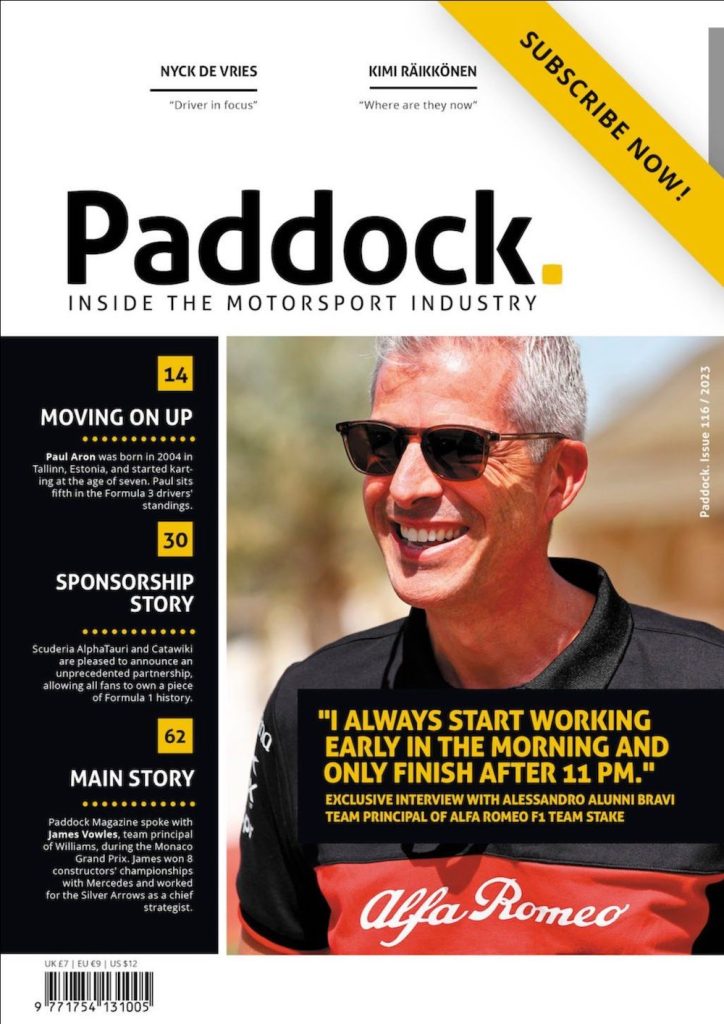We hear from Panos Seitanidis, F1 Commentator at Alpha TV Greece and Editor-in-chief of NewsAuto.gr, to catch up about catching up with Formula 1 slang.
Click here to subscribe to our print edition!
Childhood
Formula 1 is like the mother of all motor races if you will. It’s a field of constant demonstration and application of abstract technology – so damn fun, but it can be highly complicated. Not only on the engineering front but also about the way in which the complexity of this sport of, let’s say, higher minds can be understood by the average viewer. That’s where we, the representatives of the media, come along – a sort of ‘middlemen’.
One of the few positive aspects of the working in an environment where almost no-one speaks your native language is that every word used, being slang or common, is just a word you need to translate. Of course, the terminology can be difficult, especially when you haven’t done any engineering studies. But when you are a reporter, by definition you always learn new things. So since 1996, every single day, I try to learn something new.
The evolution of sport always keeps us busy. Look at the past few seasons: KERS, DRS, MGU-K, ICE, Blistering, Graining, ERS – there is always something new. I wouldn’t say that there was something utterly hard to understand but I must admit that there are a lot of words used in Formula 1 with no direct translation to other languages. Those words must be explained periphrastically, and also in the simplest way possible because it is one thing to understand the terminology of a word and another to make the others understand it as well. Actually, it’s much easier to explain a slang word that is originated from the Greek language, for example, words like ‘telemetry’ or ‘aerodynamics’.
It’s a completely different world, and it could change a lot in Formula 1.
Marbles and paddles
There is certainly a communication gap between Formula 1 commentators, reporters or spokespersons and the general public who aren’t true petrol heads but still watch the races, especially in the non-English speaking audiences. In my country, some races can reach an audience of 500.000 viewers, which isn’t as humble as it seems if you consider we are talking about a country of a population of only 10 million.
Having constant communication with a part of that audience through social media, live chats and similar platforms, I estimate that the hardcore audience is even under 10% of the above-mentioned numbers. Most of the people that listen to us have basic knowledge of motorsport and Formula 1 and I must admit that many of them have no clue about the meaning of words like ‘marbles’ and ‘paddles’.
The good thing is that the younger audience (the ones that cannot buy a Rolex yet, Mr Ecclestone!) is more familiar with the terminology used in car racing. After all, English words are used more and more in our everyday life, now that the web has made us all citizens of the same digital world.
Evolution?
Since the basics of racing slang are mostly engineering standards, I guess that the linguistic changes of the future will all be technology-related, unless the new seed of audiences can develop a more sterilised world of Formula 1. But this assumes great interactivity with social networks and other changes in the philosophy of the way the sport is run, so it doesn’t seem likely just yet.
High-end racing is constantly moving East, but all those markets are greatly influenced by the western way of living. The big difference would only come if Formula 1 conquered (I mean really, really conquered) the United States of America, and I believe that anyone who follows NASCAR and other motorsport series on the other side of the Atlantic would agree. It’s a completely different world – not necessarily better, but it’s totally different, and it could change a lot in Formula 1.






Related Articles